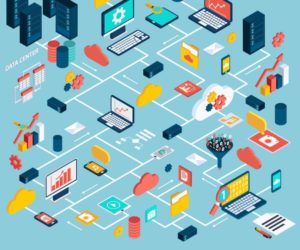
Facial recognition and related Artificial Intelligence-driven technologies are going to play an increasingly important role in consumer TVs, suggests TCL Electronics’ latest corporate update.
The China-based electronics maker offers a range of products, from mobile phones to washing machines, but it is perhaps best known internationally for its competitively priced TVs. This business area continues to be a major moneymaker for TCL, with the company reporting that the first half of 2019 saw sales volumes increase 70 percent year-over-year in North America, where TCL is now ranked second in this metric. TCL is also doing brisk business in growth markets; in India, for example, it saw sales volumes grow by more than 200 percent year-over-year.
So it’s significant that TCL has been developing facial recognition and “AI scenario identification” capabilities for its TVs, with the technologies aimed at providing “smart and customized services to users via automatically recommending content that users are interested in,” as TCL explained in its update.
The company’s interest in these technologies is tied to a deepening exploration of Internet of Things connectivity and services. “Through building its capabilities of cloud, channel and terminal, the Company will develop an open loT platform empowered by AI technology and centered on cloud platform to facilitate an interconnected, intelligent and healthy ecosystem,” TCL explained, adding, “the Company is devoted to developing TV as the IoT center of future households.”
This, in turn, may point to a growing need for sophisticated IoT security and solutions for privacy protection. On the latter point, Samsung was the subject of controversy years ago when a complaint was brought to the FTC over its use of users’ voice recordings; and just this week, a device security firm announced that it had discovered a botnet threat targeting Android-based TVs and set-top boxes, highlighting the dangers of always-connected devices in the IoT.
–
The Internet of Things (IoT) is a growing network of connected machines and objects that can communicate with each other and the Internet to better automate, creating efficiency and synergy. As the machine-to-machine begins to spread into consumer and residential markets, end users are beginning to require methods of interfacing with the network. Biometrics, smartphones and wearable tech are converging to allow for a more accessible IoT.
At the same time, as the IoT grows to control more and more of every day automated life, there is a growing importance for security and regulation. Many experts believe that biometrics and mobility hold the key to a safer and more secure IoT. Learn more on Mobile ID World’s Internet of Things page.

Follow Us